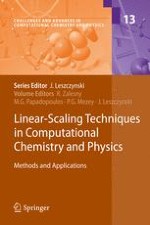"Linear-Scaling Techniques in Computational Chemistry and Physics" summarizes recent progresses in linear-scaling techniques and their applications in chemistry and physics. In order to meet the needs of a broad community of chemists and physicists, the book focuses on recent advances that extended the scope of possible exploitations of the theory.
The first chapter provides an overview of the present state of the linear-scaling methodologies and their applications, outlining hot topics in this field, and pointing to expected developments in the near future. This general introduction is then followed by several review chapters written by experts who substantially contributed to recent developments in this field.
The purpose of this book is to review, in a systematic manner, recent developments in linear-scaling methods and their applications in computational chemistry and physics. Great emphasis is put on the theoretical aspects of linear-scaling methods.
This book serves as a handbook for theoreticians, who are involved in the development of new efficient computational methods as well as for scientists, who are using the tools of computational chemistry and physics in their research.
